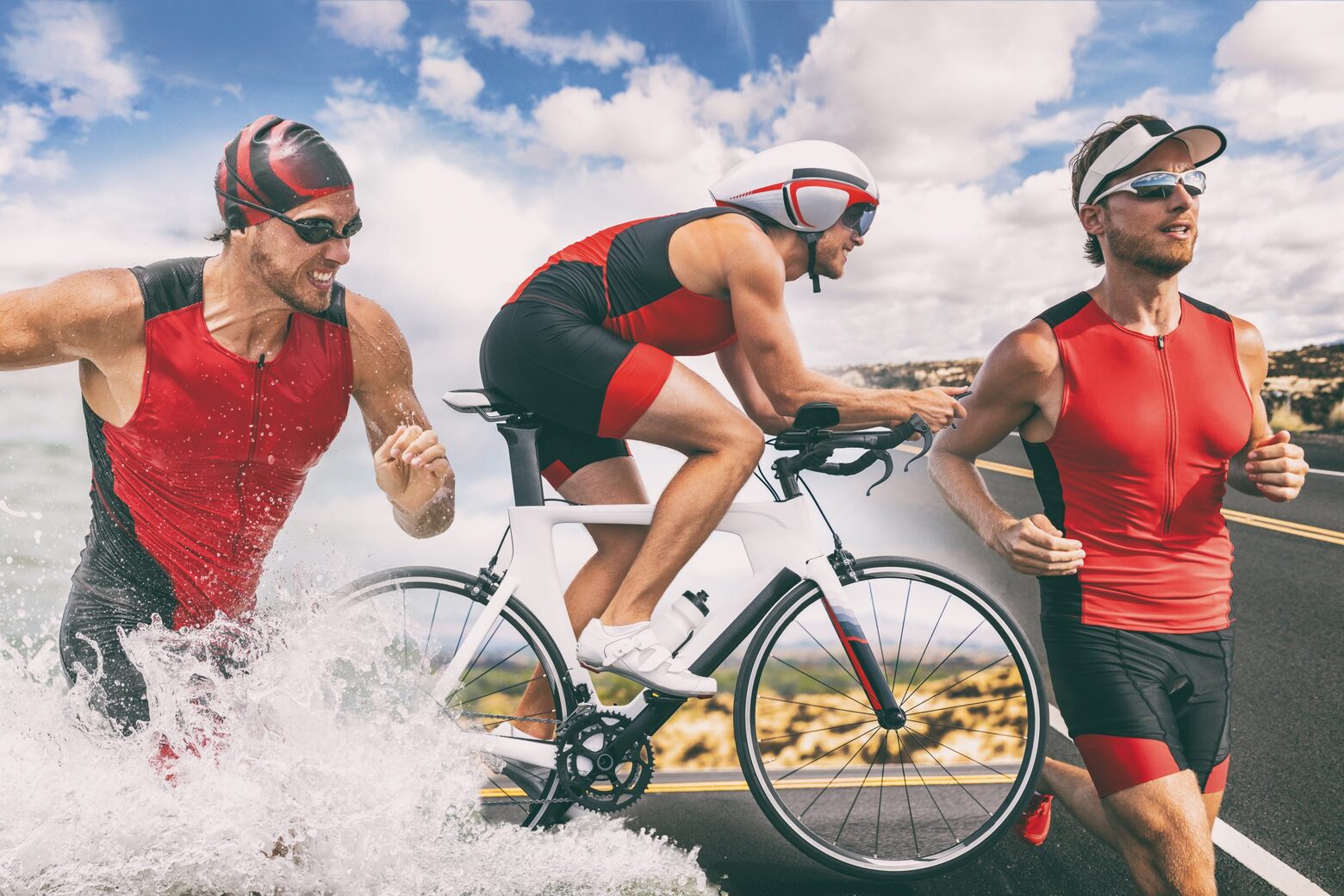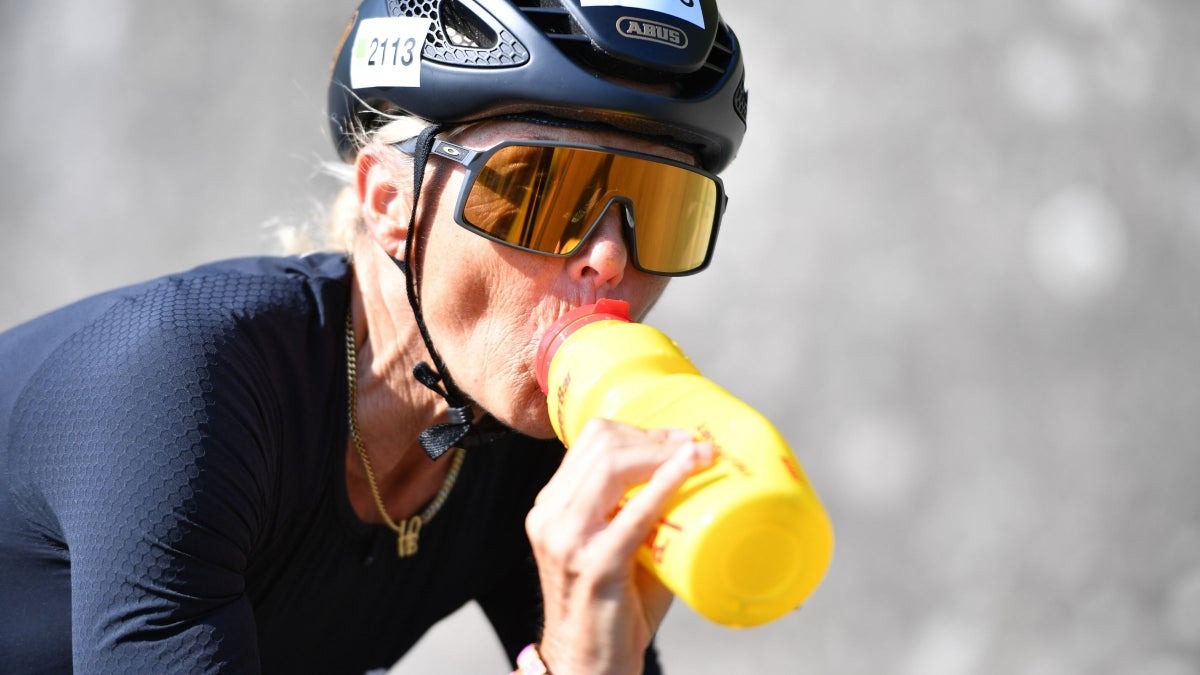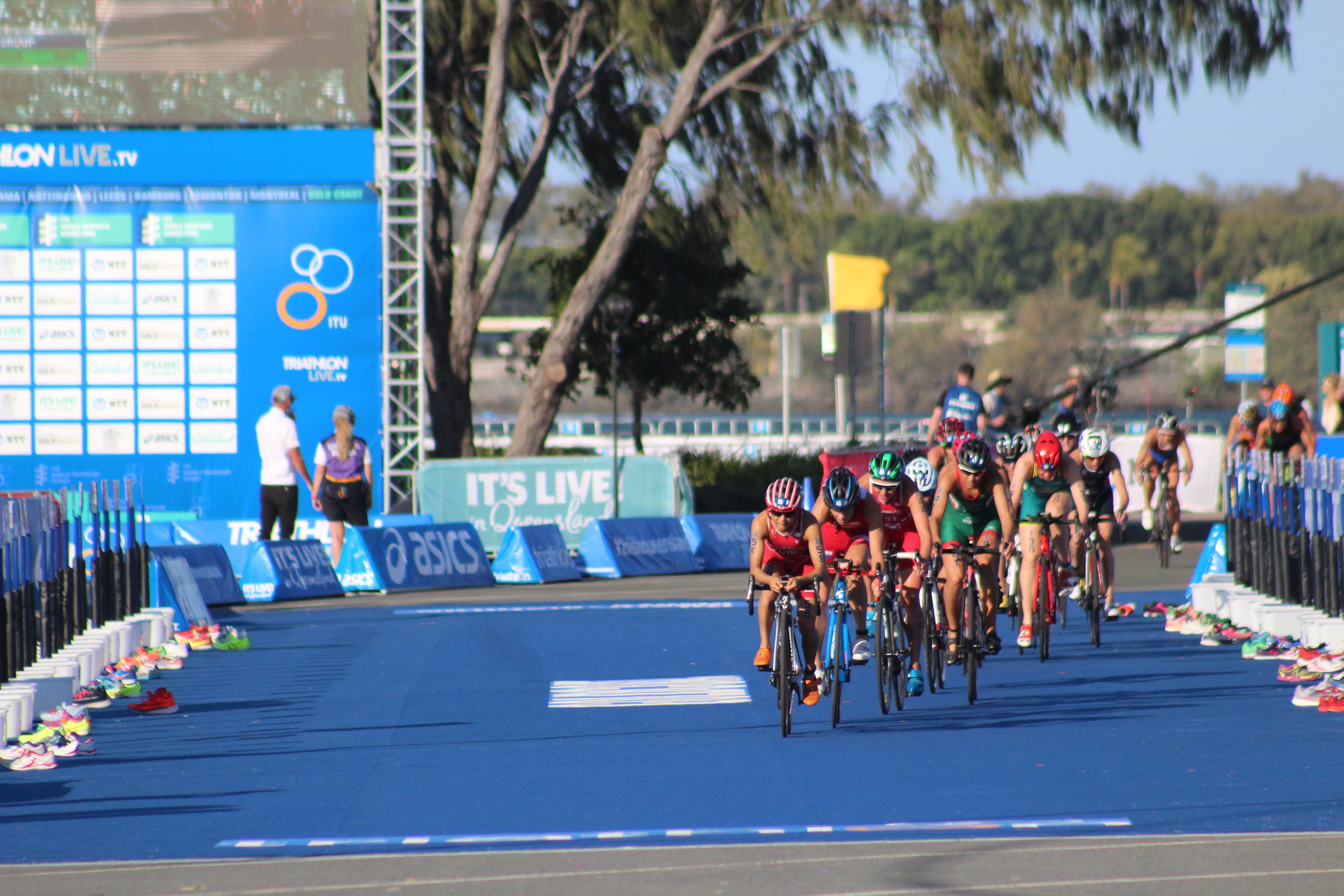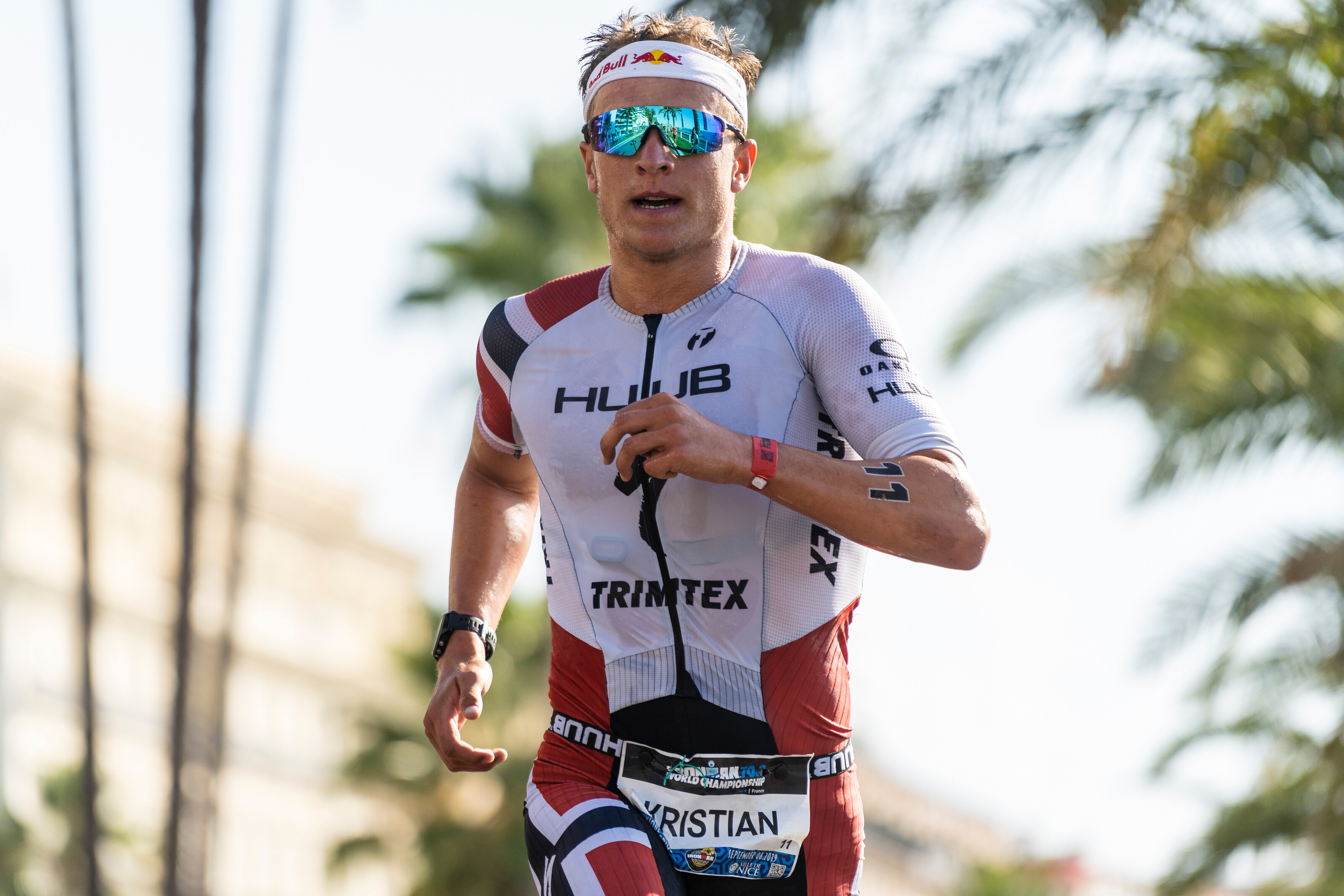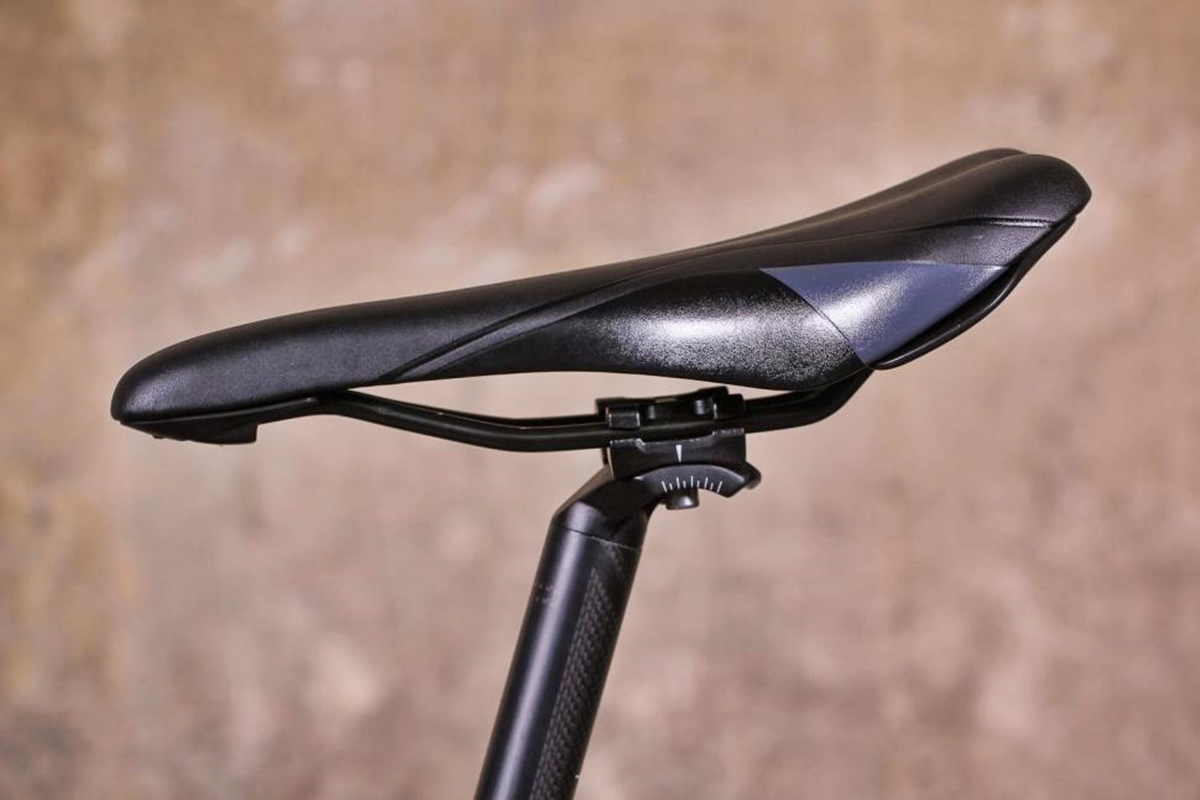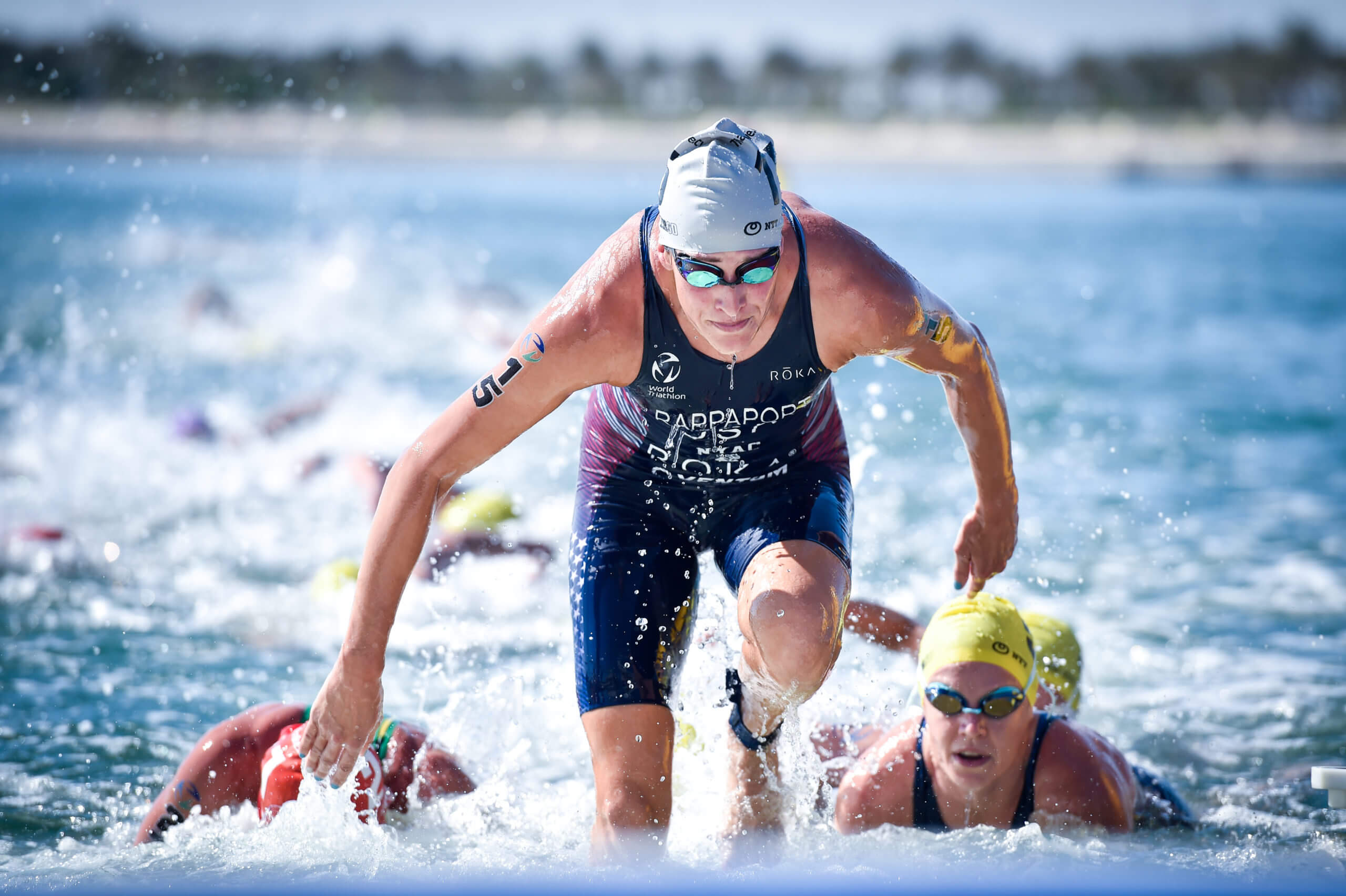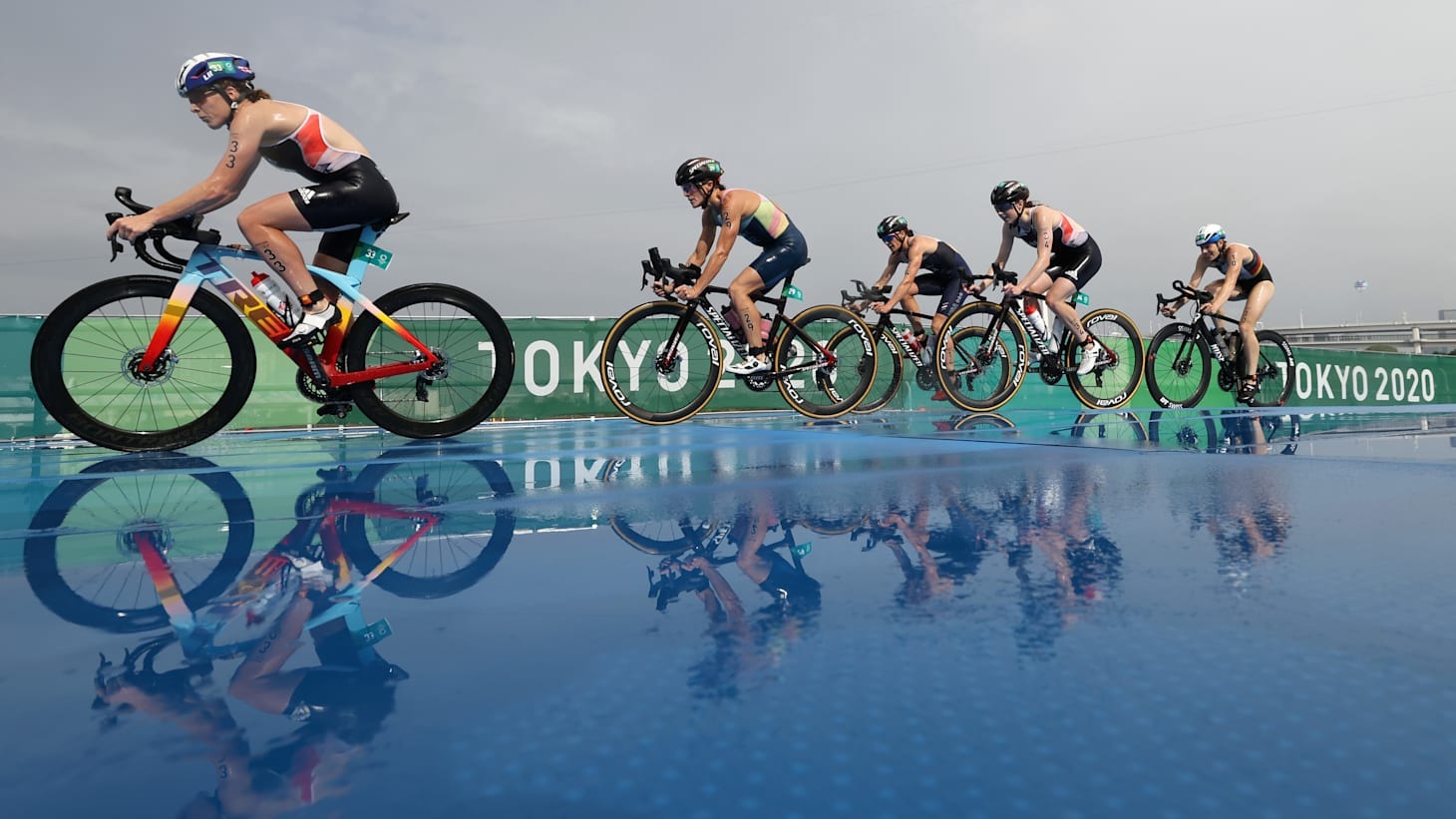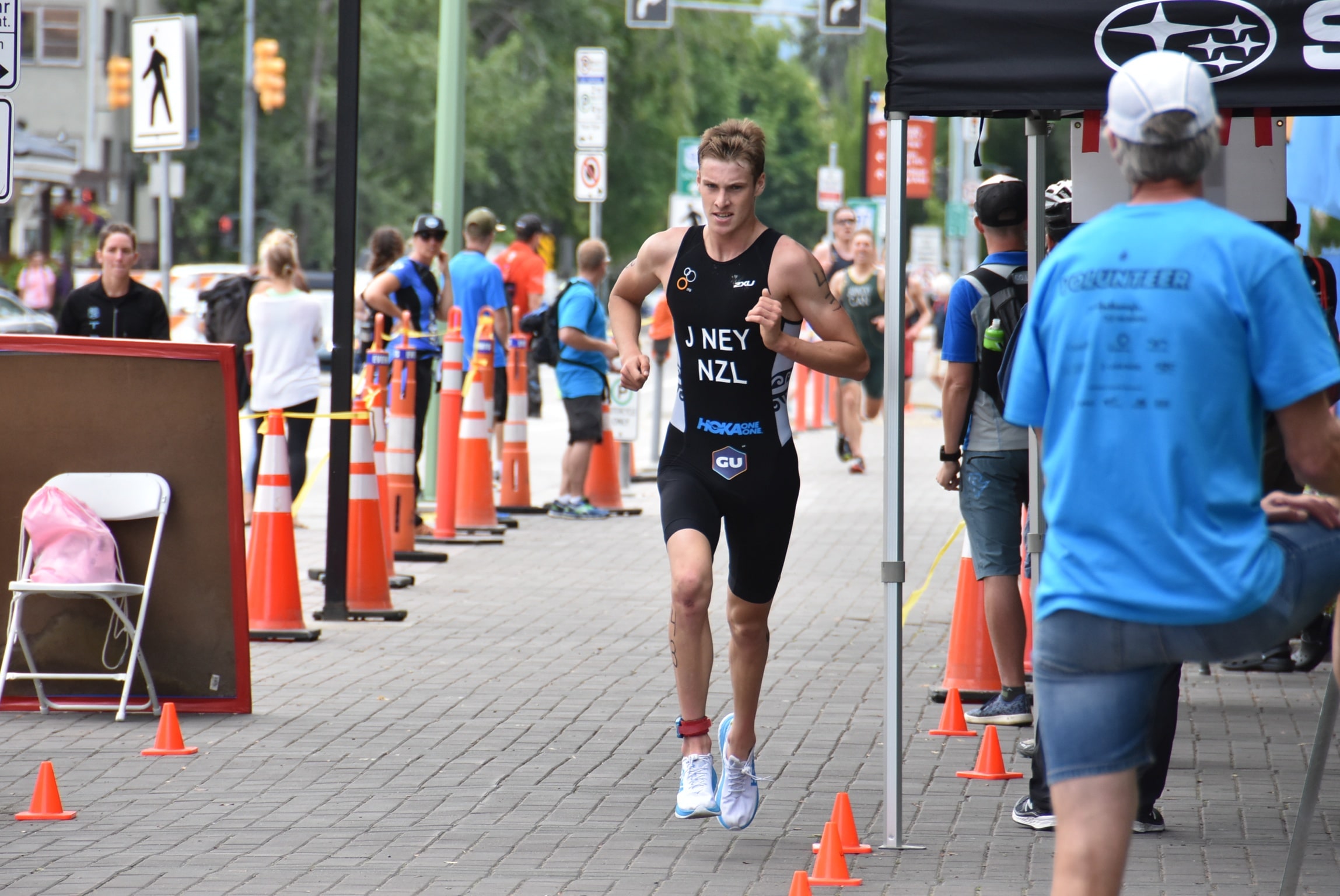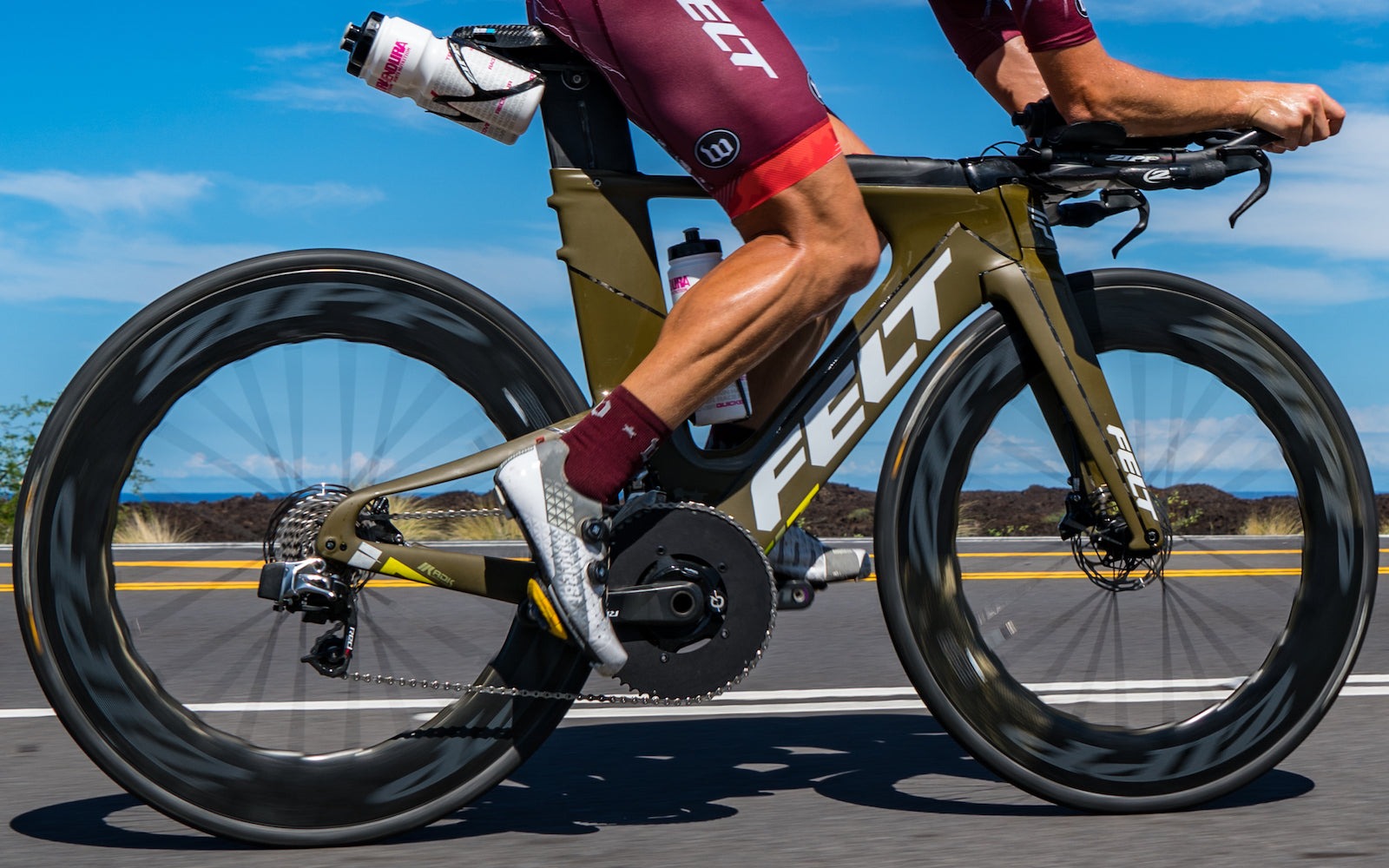

Featured
What Is The Best Triathlon Bike
Modified: August 19, 2023
Looking for the best triathlon bike? Discover our featured selection of top-rated triathlon bikes for ultimate performance and speed.
Overview of Triathlon Bikes
Triathlon bikes, also known as time trial bikes or tri bikes, are specially designed to optimize performance during a triathlon event. Unlike traditional road bikes, triathlon bikes are built to maximize aerodynamics and speed, while still providing a comfortable and efficient riding experience.
One of the key features of a triathlon bike is its aerodynamic design. The frame geometry is often more aggressive, with a steeper seat tube angle and a lower front end, allowing the rider to achieve a more aerodynamic position. This helps reduce wind resistance, enabling faster and more efficient riding.
Triathlon bikes are also equipped with aerodynamic handlebars called aerobars or tri bars. These bars allow the rider to assume a more aerodynamic position by resting their forearms on the pads and tucking their body in. This reduces the frontal area and decreases wind drag, resulting in increased speed.
Another important feature of triathlon bikes is the integration of storage and hydration systems. Due to the longer duration of triathlon events, it is crucial for athletes to have easy access to nutrition and hydration. Triathlon bikes often include integrated storage solutions, such as bento boxes, saddle-mounted storage, and hydration systems integrated into the frame or aerobars.
In addition to the aerodynamic design and integrated storage solutions, triathlon bikes are equipped with specific components that cater to the needs of triathletes. These components include a larger gear cassette for easier climbing, a triathlon-specific saddle for added comfort during longer rides, and aerodynamic wheels that further reduce drag.
When it comes to choosing a triathlon bike, there are various factors to consider, such as budget, experience level, and the specific requirements of the individual athlete. It’s important to test ride different models and sizes to find the best fit and comfort. Additionally, considering the race distance and terrain can also influence the bike’s specifications.
Overall, triathlon bikes are designed to optimize speed, aerodynamics, and comfort for triathletes. They offer specialized features and superior performance that can make a significant difference in race outcomes. Whether you’re a seasoned triathlete or just starting out, investing in a high-quality triathlon bike can help you reach your full potential and achieve your best performance in the sport.
Factors to Consider When Choosing a Triathlon Bike
Choosing the right triathlon bike is crucial for optimizing your performance in triathlon events. With so many options available in the market, it can be overwhelming to make the right choice. Here are some key factors to consider when selecting a triathlon bike:
- Budget: Determine your budget range before starting your search. Triathlon bikes can vary significantly in price, so having a clear budget will help narrow down your options.
- Experience Level: Consider your experience level in triathlon. If you’re a beginner, you may not need a top-of-the-line, expensive bike. Focus on finding a bike that provides a comfortable fit and meets your basic needs. More experienced triathletes may want to invest in a higher-end bike with advanced features.
- Frame Geometry: Pay attention to the frame geometry of the bike. Triathlon bikes typically have a steeper seat tube angle and a lower front end, allowing for a more aerodynamic riding position. Ensure the bike’s geometry suits your body type and riding style.
- Frame Materials: Triathlon bikes can be made from various materials, such as carbon fiber, aluminum, and titanium. Carbon fiber frames are known for their lightweight and stiffness, providing excellent power transfer. Aluminum frames are more affordable but may not offer the same level of comfort as carbon fiber. Titanium frames offer a good balance of weight, comfort, and durability, but are generally more expensive.
- Components: Consider the components of the bike, including the drivetrain, brakes, and wheels. Opt for high-quality components that suit your riding style and needs. Ensure the bike has the necessary gear range for your race distances and terrain.
- Bike Fit: A proper bike fit is crucial for comfort and performance. Look for a bike that allows for easy adjustment of the saddle height, reach, and stack height. Consider getting a professional bike fit to ensure the bike is tailored to your body dimensions.
- Testing and Research: Take the time to test ride different triathlon bikes before making a decision. Research online reviews and speak to experienced triathletes to gather insights. Familiarize yourself with the specific features and technologies offered by different brands.
- Support and Warranty: Consider the support and warranty provided by the manufacturer. Look for a reputable brand that offers good customer service and a solid warranty on the frameset and components.
By considering these factors, you can make an informed decision when choosing a triathlon bike that matches your requirements and maximizes your performance potential. Remember, finding the right bike that fits your body and riding style is essential for a comfortable and successful triathlon experience.
Frame Materials for Triathlon Bikes
When choosing a triathlon bike, one of the key factors to consider is the frame material. The material used in the construction of the frame can greatly affect the bike’s performance, weight, comfort, and overall durability. Here are some common frame materials used in triathlon bikes:
- Carbon Fiber: Carbon fiber frames are extremely popular in the world of triathlon bikes due to their excellent combination of strength, stiffness, and light weight. Carbon fiber allows for the design of aerodynamic and responsive frames without compromising comfort. It absorbs vibrations and road chatter, resulting in a smooth and comfortable ride. Carbon fiber frames are also known for their impressive power transfer, making them ideal for maximizing speed on the racecourse. However, they tend to be more expensive compared to other frame materials.
- Aluminum: Aluminum frames are a more budget-friendly option. They offer good stiffness and durability while being lighter than steel frames. Aluminum frames provide a responsive and efficient ride, making them suitable for entry-level or mid-range triathlon bikes. However, they may not offer the same level of comfort as carbon fiber frames, as aluminum can transmit more road vibrations.
- Titanium: Titanium frames offer a unique combination of low weight, supple ride quality, and durability. They are highly resistant to corrosion and can handle harsh conditions. Titanium frames provide a smooth and comfortable ride, thanks to their natural flexibility and vibration-damping properties. They are also known for their longevity and resistance to fatigue. However, titanium frames tend to be more expensive than carbon fiber or aluminum.
Each frame material has its own advantages and considerations, and the choice ultimately depends on personal preference, budget, and riding style. Carbon fiber frames are a popular choice for serious triathletes looking for the ultimate performance and aerodynamics. Aluminum frames are a more affordable option for beginners or those on a tighter budget. Titanium frames offer a premium and durable option for riders seeking a comfortable and long-lasting ride.
It’s important to note that frame material is just one factor to consider when choosing a triathlon bike. Factors such as frame geometry, components, and bike fit also play significant roles in the overall performance and comfort of the bike. Therefore, it is recommended to test ride different bikes with various frame materials to find the one that suits your specific needs and preferences.
Aerodynamics and Speed Considerations
In the world of triathlon, where fractions of a second can make a significant difference in race outcomes, maximizing aerodynamics and speed is crucial. Triathlon bikes are specifically designed to minimize wind resistance and optimize speed during the cycling leg of the race. Here are some key considerations when it comes to aerodynamics and speed in triathlon bikes:
Frame Design: Triathlon bike frames are built with aerodynamics in mind. They often feature unique frame geometries, such as a steep seat tube angle and elongated tube profiles, to reduce drag and enhance airflow around the bike. The frame design is optimized to create a streamlined and low-drag silhouette, allowing the rider to cut through the wind more efficiently.
Aero Handlebars: The handlebars on a triathlon bike are typically designed with aerodynamics in mind. Triathlon-specific handlebars, known as aerobars or tri bars, allow the rider to assume a more aerodynamic position by resting their forearms on the pads and tucking their body in. This reduces the frontal area and decreases wind drag, resulting in increased speed.
Wheel Design: Aerodynamic wheels are a crucial component of a triathlon bike. Deep-section carbon wheels are commonly used as they reduce air resistance by minimizing the turbulence caused by spokes. These wheels improve aerodynamics and can provide a noticeable increase in speed, especially in windy conditions. However, it’s important to note that deep-section wheels may be more affected by crosswinds compared to standard wheels, so it’s vital to choose the right wheel profile based on race conditions.
Internal Cable Routing: Triathlon bikes often feature internal cable routing, where cables are hidden inside the frame tubes. This not only enhances the bike’s aesthetics but also reduces drag by minimizing the exposed surface area that can create turbulence. Internal cable routing helps optimize the bike’s aerodynamics and speed.
Streamlined Accessories: When considering aerodynamics, it’s essential to take into account the additional accessories you may use during a race, such as water bottle cages, storage solutions, and electronic devices. Opt for lightweight and aerodynamically designed accessories that seamlessly integrate with the overall bike setup to minimize drag and maintain optimal speed.
It’s worth noting that while aerodynamics play a crucial role in triathlon bike performance, it’s important to find the right balance between aerodynamics and comfort. The most aerodynamic bike position may not necessarily be the most comfortable or sustainable for the duration of a long-distance triathlon event. Therefore, it’s essential to consider your own riding position and comfort when optimizing aerodynamics for your triathlon bike setup.
By paying attention to the design of the frame, handlebars, wheels, and other components, you can improve the aerodynamics of your triathlon bike and achieve higher speeds during your races. Finding the optimal balance between aerodynamics and comfort can help you maintain peak performance while minimizing fatigue over the course of a triathlon event.
Importance of Bike Fit in Triathlon
The importance of a proper bike fit cannot be overstated when it comes to triathlon. A well-fitted bike can greatly enhance comfort, optimize power output, and minimize the risk of injuries. A proper bike fit is essential for triathletes to perform at their best during the race. Here are some key reasons why bike fit is important in triathlon:
Comfort: A proper bike fit ensures that the rider is in a comfortable and sustainable position throughout the duration of the race. The position should distribute weight evenly, preventing excessive strain on specific body parts. Discomfort or pain during the bike leg can significantly impact performance and overall race experience.
Efficiency and Power Output: Optimal bike fit ensures that the rider is in a position that maximizes power transfer to the pedals. Proper alignment of the saddle height, fore-aft position, and handlebar reach can improve pedaling efficiency, allowing the rider to generate more power without wasting energy. This can result in faster bike splits and better overall race performance.
Aerodynamics: Bike fit plays a crucial role in optimizing aerodynamics. A well-fitted bike allows the rider to achieve a more streamlined position, reducing wind resistance and drag. By minimizing frontal area and maintaining an efficient body position, the rider can glide through the air with less effort, resulting in increased speed and energy savings.
Injury Prevention: A bike fit that takes into account the rider’s unique body dimensions and flexibility helps reduce the risk of overuse injuries. Proper alignment and positioning can alleviate strain on joints, muscles, and tendons, reducing the likelihood of developing discomfort or injuries during training or racing.
Bio-Mechanical Efficiency: Every athlete has individual bio-mechanical characteristics, such as leg length, flexibility, and body proportions. A bike fit considers these factors to optimize the rider’s bio-mechanics on the bike. Proper positioning of cleats, saddle height, and handlebar reach ensures that the rider’s muscles are engaged optimally, minimizing energy wastage and improving pedaling efficiency.
Personalization: Every individual is unique, and a bike fit takes into account personal preferences and individual goals. A professional bike fitting session can address specific concerns and customize the bike setup to match the rider’s needs, preferences, and flexibility.
It’s important to note that a bike fit is not a one-time event. As the athlete gains experience, fitness, and flexibility, their bike fit needs may change. Regular follow-up bike fit sessions are essential to ensure that the bike’s setup continues to meet the evolving needs of the rider.
Investing in a professional bike fit is highly recommended for triathletes of all levels. A trained bike fitter can assess your body dimensions, flexibility, and riding style to provide personalized adjustments to your bike’s setup. This will not only improve your performance on the bike but also enhance your overall comfort and enjoyment of the sport.
Best Triathlon Bikes in the Market
Choosing the best triathlon bike for your needs can be an overwhelming task, given the wide range of options available in the market. However, certain models have consistently proven to be top performers and popular choices among triathletes. Here are some of the best triathlon bikes in the market:
Cervelo P-Series: The Cervelo P-Series has long been a favorite among triathletes, known for its exceptional aerodynamics and versatility. The P-Series features a lightweight carbon frame, aero handlebars, and integrated storage solutions. It offers great value for its performance and is suitable for both experienced triathletes and beginners on a budget.
Bianchi Aquila CV: The Bianchi Aquila CV is a high-end triathlon bike renowned for its aerodynamic design and comfort. It features a carbon frame with Bianchi’s Countervail vibration-cancelling technology, which reduces road vibrations for a smooth and comfortable ride. The Aquila CV also offers excellent power transfer and customizable fit options.
Trek Speed Concept: The Trek Speed Concept is a popular choice for its aerodynamic performance and exceptional integration of storage and hydration. This triathlon bike features a light and stiff carbon frame, aero handlebars with integrated brake calipers, and a variety of options for personalized fit. The Speed Concept is known for its adjustability and ease of maintenance.
Specialized Shiv: The Specialized Shiv is a well-regarded triathlon bike, appreciated for its aerodynamic design and impressive ride quality. It features a carbon frame and fork, aero handlebars, and integrated hydration and storage solutions. The Shiv boasts excellent stiffness, stability, and responsive handling, making it a top choice for triathletes seeking speed and comfort.
Scott Plasma: The Scott Plasma series is highly regarded for its cutting-edge aerodynamics and race-winning performance. The Plasma features an aerodynamic carbon frame, aero handlebars, and integrated storage options. Known for its exceptional power transfer and stable handling, the Scott Plasma is favored by professional triathletes and competitive age-groupers alike.
Argon 18 E-119 Tri: The Argon 18 E-119 Tri is a triathlon bike known for its aerodynamic efficiency and attention to detail. This high-performance bike features a carbon frame with clean internal cable routing and optimal integration of hydration systems. The E-119 Tri offers precise handling, superior power transfer, and customizable fit options, making it a top choice for triathletes aiming for peak performance.
While these are some of the best triathlon bikes currently available, it’s essential to remember that the best choice for you ultimately depends on your budget, experience level, riding style, and personal preferences. It’s recommended to test ride different models and consult with experts to find the triathlon bike that best fits your specific needs and goals.
Conclusion
Choosing the right triathlon bike is an important decision that can greatly impact your performance and enjoyment of the sport. Triathlon bikes are specially designed to optimize aerodynamics, speed, and comfort, catering to the unique requirements of triathlon events.
When selecting a triathlon bike, consider factors such as budget, experience level, frame materials, aerodynamics, bike fit, and available options in the market. Carbon fiber frames are popular for their lightweight and stiffness, while aluminum and titanium offer alternative options. Aerodynamics and speed considerations include frame design, aerobars, wheel choice, and streamlined accessories.
Bike fit plays a critical role in enhancing comfort, efficiency, power output, aerodynamics, and injury prevention. Investing in a proper bike fit, tailored to your body dimensions and riding style, is vital for optimal performance and long-term enjoyment of triathlon.
When it comes to the best triathlon bikes in the market, popular options include the Cervelo P-Series, Bianchi Aquila CV, Trek Speed Concept, Specialized Shiv, Scott Plasma, and Argon 18 E-119 Tri. These bikes offer outstanding aerodynamics, comfort, integration of storage solutions, and customizable fit options to cater to the needs of triathletes.
In conclusion, selecting the best triathlon bike is a personal decision that should align with your budget, experience, preferences, and racing goals. It’s recommended to test ride different models, consult with experts, and consider professional bike fitting services to find the perfect bike that will enhance your performance and allow you to reach new levels of success in the world of triathlon.
